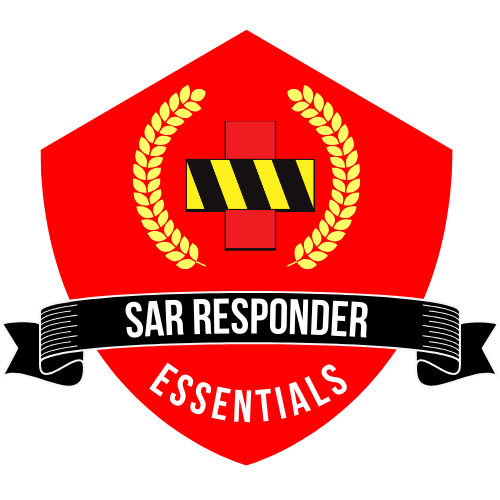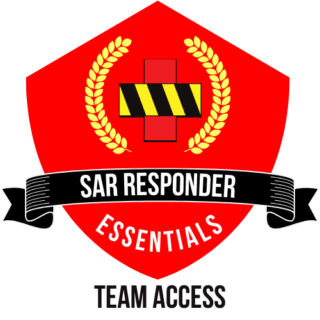Search and Rescue (SAR) is not just a role—it’s a calling. The work is demanding, often unpaid, and emotionally challenging. Before deciding to volunteer, consider these key questions:
- What knowledge and skills are required?
- How much time and money will it cost?
- How and where can you get involved?
While some join SAR for personal reasons, like enhancing their resume or enjoying the outdoors, these motivations rarely sustain long-term commitment. Instead, those who thrive in SAR are motivated by the opportunity to help others during their most challenging moments and to face tasks and environments that many cannot.
Online SAR Training
Level 1: Free SAR Training via Email
This two-week, email-based introductory course provides a free preview of the foundational knowledge to help you decide if SAR is the right path for you. Lessons are drawn from the SAR Fundamentals course and offer a no-obligation way to explore the field.
- How to Enroll: Enter your name and email to begin. New subscribers only.
- Note: If you don’t receive a confirmation email, check your junk folder.
Level 2: SAR Responder Essentials Membership
For individuals and teams serious about SAR, this membership offers a comprehensive training platform, including all SAR-related courses and resources in one place.
- Membership Features:
- Unlimited access to foundational and advanced SAR topics like:
- SAR Fundamentals
- Disaster Response
- Bloodborne Pathogens
- K9 Handling
- Navigation
- Emergency Operations Center Collaboration
- Responder Safety
- Available as monthly or annual plans.
- Memberships can be paused and restarted at any time.
- Unlimited access to foundational and advanced SAR topics like:
Team Enrollment and Advanced Management
Team Enrollment Options
- Single-Payer Model: One leader pays for all team members. Ideal for agency-sponsored teams or grant-funded groups.
- Individual Enrollment Model: Each team member enrolls individually and is later linked to the team.
Benefits of Team Enrollment:
- Certificates and transcripts for members.
- Self-paced courses accessible on any device.
- Built-in note-taking tools.
Advanced Team Management Features
For team training managers, additional features include:
- Member progress tracking.
- Certificate and transcript management.
- Custom course assignments.
Course Catalog and Key FAQs
Browse All Courses
Explore the full range of courses covering foundational to advanced SAR knowledge.
Key FAQs
- Why e-Learning? Nearly 85% of onboarding and refresher training is expected to shift online, making it a convenient and effective option.
- Costs of SAR Volunteering: Understand time and financial commitments before joining. Read the Case Study: "How Much Does It Cost To Be A Search & Rescue Volunteer?" here.
- Certifications: Vary by local, state, and federal standards. Contact your SAR agency to clarify requirements.
SAR Certifications and Standards
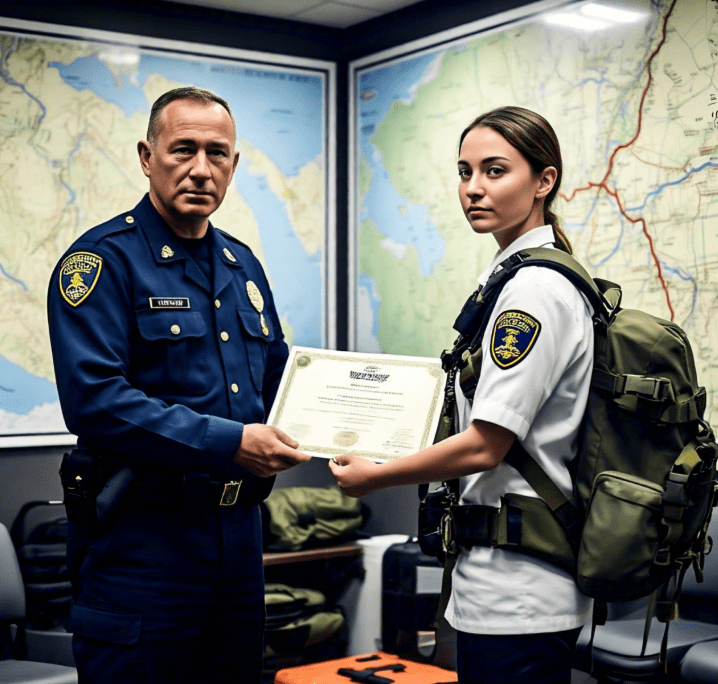
State-Level SAR Standards
Some states, like Oregon and New Mexico, have specific SAR standards. Reciprocity across states is rare, so responders may need to re-certify if they relocate.
Federal-Level SAR Standards
Federal standards are diverse, with FEMA leading in urban SAR guidelines. FEMA also offers CERT (Community Emergency Response Team) training for disaster response.
Local-Level SAR Standards
Local SAR teams often set their own standards. Many align with NASAR’s certifications, but these are typically not sufficient on their own. Teams often blend various certifications to create a comprehensive training framework.
Urban SAR (USAR)
Urban SAR focuses on disaster scenarios like hurricanes and building collapses. FEMA sponsors 30 USAR teams across the U.S., each consisting of specialists in:
- Medical
- Canine
- Logistics
- Command/Leadership
- HazMat
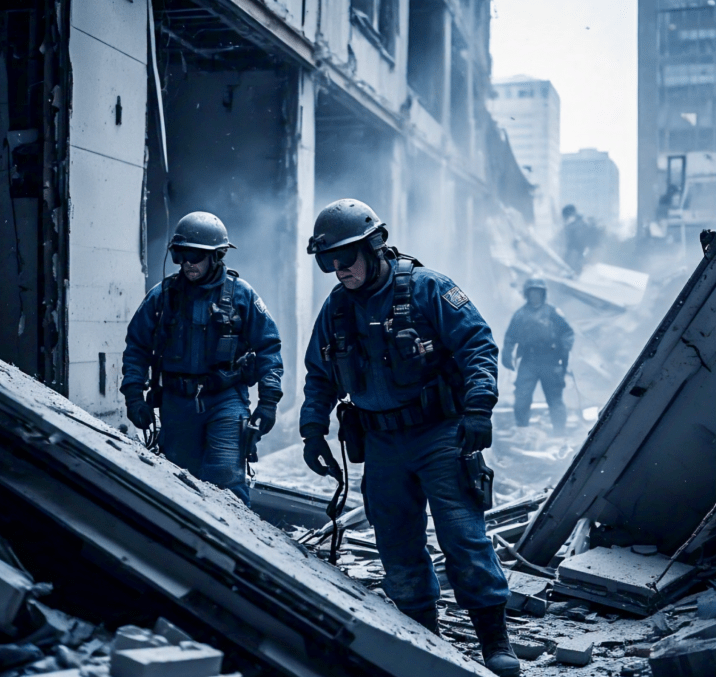
At the state level, most states (and some large metro areas) also sponsor USAR teams, which are part of the same system but organized under the membership-based State Urban Search And Rescue Alliance.
USAR teams are categorized into types, such as:
- Type 1: 72 responders operating autonomously for 14 days.
- Type 3: 23 responders with focused capabilities.
Steps to Becoming a SAR Volunteer
If you’re interested in joining a Search and Rescue (SAR) team, you’re signing up for more than just an exciting challenge—you’re committing to a service that saves lives. SAR is demanding but incredibly rewarding, requiring training, teamwork, and dedication. Here’s how to get started:
Step 1: Research Local SAR Teams
Not all SAR teams are the same. Some specialize in wilderness rescue, disaster response, K9 search teams, urban SAR, or technical rescue.
- Look for county, state, or nonprofit SAR teams in your area.
- Check their entry requirements (age, fitness, background checks, residency, etc.).
- Reach out to current members to learn about expectations.
Many SAR units operate as volunteer organizations under sheriff’s offices, emergency management agencies, or independent nonprofits.
Step 2: Get Physically and Mentally Ready
SAR work can be physically intense and mentally taxing.
- Stay fit – Endurance, strength, and stamina matter.
- Develop mental resilience – Missions can be long, frustrating, or emotionally difficult.
- Work on navigation skills – Knowing how to use a map, compass, and GPS is critical.
Step 3: Complete Required Training
Most teams require basic SAR training before field deployment. Common certifications include:
- SAR Basic Course – Covers search techniques, clue awareness, and survival.
- First Aid/CPR – A minimum requirement for responders.
- Wilderness First Aid (WFA) or Wilderness First Responder (WFR) – Critical for remote searches.
- Incident Command System (ICS-100 & ICS-200) – Required for many teams (FEMA training).
- Land Navigation – Knowing how to navigate in various terrains is essential.
Some teams may offer train-on-the-job programs, while others require you to obtain certifications independently.
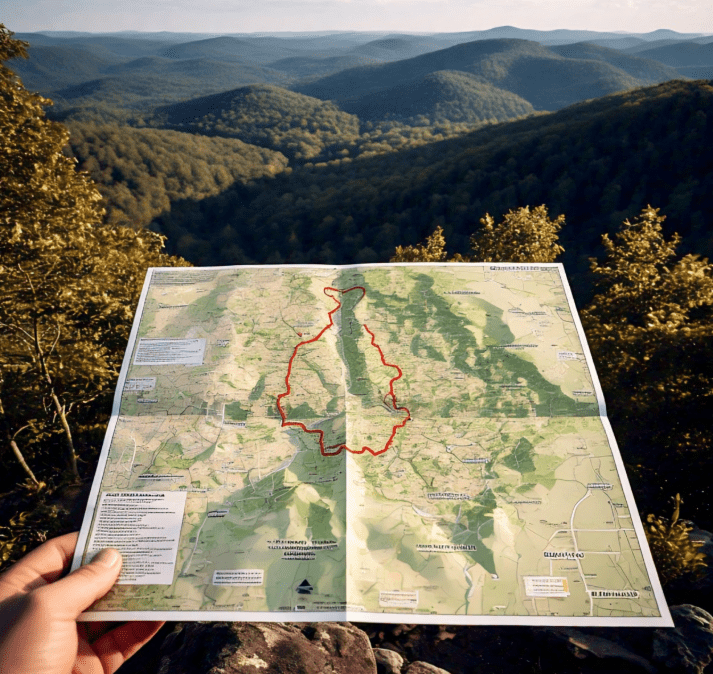
Step 4: Get the Right Gear
SAR volunteers typically supply their own gear, so investing in quality equipment is key. Essentials include:
- Durable, waterproof boots – Your feet are your most valuable asset.
- Weather-appropriate clothing – Layering is key for all-season readiness.
- A reliable backpack – To carry mission essentials like water, food, and medical supplies.
- Navigation tools – Map, compass, and GPS.
- A quality flashlight/headlamp – Night searches are common.
Your team may have a required gear list—be sure to follow their recommendations.
Step 5: Attend SAR Training and Drills
SAR is not just about responding to calls—you must train regularly to stay proficient.
- Join monthly training exercises to practice skills in real-world conditions.
- Learn about rope rescue, K9 handling, disaster response, and communications.
- Participate in mock search operations to gain experience.
The more you train, the more valuable you become to your team.
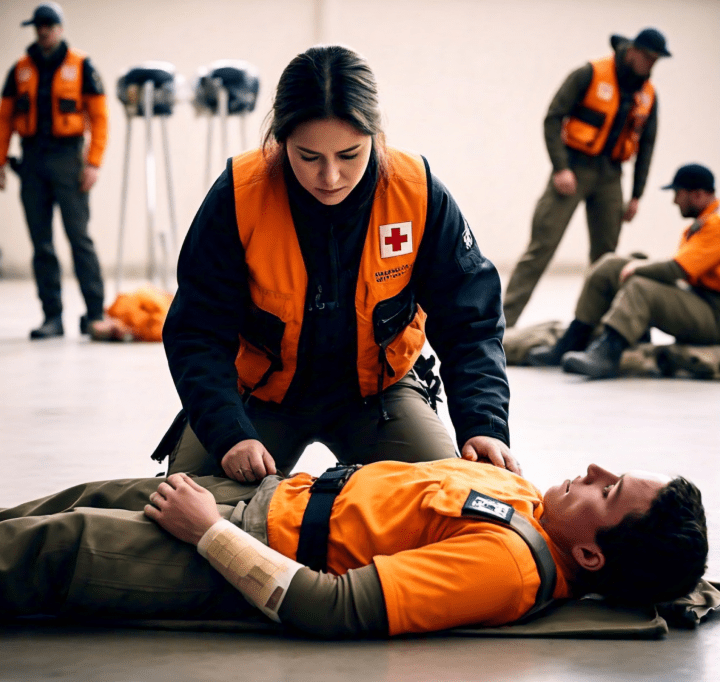
Step 6: Be Ready for Deployment
Once you meet your team’s requirements, you’ll be placed on-call for missions.
- Understand that searches can happen anytime—day or night, good weather or bad.
- Be prepared for long hours, tough terrain, and sometimes heartbreaking outcomes.
- Stay flexible—SAR work requires patience and adaptability.
Step 7: Continue Learning and Advancing
SAR is a lifelong learning process. As you gain experience, consider:
- Advanced SAR certifications – Technical rescue, tracking, flood and swiftwater rescue, or disaster response.
- Specializations – K9 handling, drone operations, or medical response.
- Leadership roles – Mentoring new recruits or serving as a SAR instructor.
Final Thought: SAR is a Commitment, Not Just an Adventure
Becoming a SAR volunteer isn’t just about thrill-seeking—it’s about serving others in their most desperate moments. If you have the discipline, dedication, and heart to answer the call, SAR can be one of the most fulfilling ways to make a difference. Are you ready?
Alternative Ways to Serve Beyond Traditional Search and Rescue (SAR)
Search and Rescue (SAR) is a demanding and rewarding commitment, but it’s not the only way to support your community in emergency response. If SAR isn't the right fit, there are many alternative service options that still allow you to contribute to disaster response, public safety, and emergency preparedness. Here are some impactful ways to get involved:
1. 4x4 and Off-Road Rescue Teams
Many SAR teams rely on 4x4 units and off-road rescue volunteers to access rugged terrain, transport personnel, and deliver supplies.
- Support SAR missions by providing transport in challenging environments.
- Assist in disaster response by delivering aid to hard-to-reach communities.
- Participate in vehicle recovery operations for stranded or lost individuals.
Some regions have dedicated off-road response teams that work alongside law enforcement and SAR groups.
2. Community Emergency Response Team (CERT)
CERT is a FEMA-backed volunteer program that trains everyday citizens in disaster response.
- Learn basic search and rescue, fire suppression, medical aid, and disaster preparedness.
- Assist in large-scale incidents when professional responders are overwhelmed.
- Provide community education and support before, during, and after disasters.
CERT teams are excellent for those who want to serve but may not have the time for full SAR training.
3. Drone Search and Public Safety Teams
Drones have become a game-changer in SAR and emergency response. Many agencies now have dedicated drone teams that assist in:
- Aerial searches for missing persons in difficult terrain.
- Damage assessments after disasters like floods, wildfires, and tornadoes.
- Providing situational awareness to emergency managers and first responders.
If you have a Part 107 Drone Pilot License, you may be able to volunteer with SAR teams, emergency management offices, or law enforcement agencies.
4. Police and Fire Auxiliary Units
Many law enforcement and fire departments have auxiliary or reserve programs for trained civilian volunteers.
- Police Auxiliary / Community Support Officers help with traffic control, event security, and community patrols.
- Fire Department Reserves assist in non-firefighting roles like logistics, rehab support, and emergency preparedness education.
- Disaster Response Teams within police and fire departments provide relief and coordination support during major incidents.
These roles provide valuable hands-on experience while directly supporting public safety agencies.
5. Community Policing and Volunteer Programs
If you're interested in law enforcement support, community policing programs offer various volunteer roles:
- Neighborhood Watch – Work with local police to prevent crime and enhance community safety.
- Citizens Police Academy – Learn about law enforcement operations and assist in outreach programs.
- Victim Assistance Programs – Support crime victims and help with crisis intervention services.
These opportunities allow volunteers to make a difference without becoming a sworn officer.
6. Disaster Relief and Shelter Operations
Organizations like the American Red Cross, Team Rubicon, and local emergency management offices rely on volunteers to assist in disaster response efforts.
- Help with evacuation shelters and emergency supply distribution.
- Provide emotional support and assistance to disaster survivors.
- Deploy as part of a national response team after major disasters.
If you want to help in emergencies but prefer logistics, coordination, or community support, disaster relief may be a great fit.
7. Amateur Radio (HAM) Emergency Communications
During disasters, traditional communications can fail, and HAM radio operators play a vital role in maintaining emergency connectivity.
- Provide backup communication when cell towers and internet services go down.
- Work with ARES (Amateur Radio Emergency Services) and RACES (Radio Amateur Civil Emergency Service).
- Support SAR teams, CERT, and emergency management by relaying critical information.
Getting a HAM radio license is relatively easy, and it’s a valuable skill for disaster response.
Finding the Right Fit
Not every emergency volunteer role requires intense physical demands. Whether you're drawn to technical support, logistics, community engagement, or field operations, there are plenty of ways to serve.
- Consider your skills and interests – Are you good with technology, logistics, or communications?
- Look at time commitment levels – Some programs require intensive training, while others allow for flexible participation.
- Reach out to local emergency services – They can guide you to opportunities that fit your experience level.
Final Thought: Service Comes in Many Forms
You don’t have to be on the front lines of SAR missions to make an impact. From off-road rescue to disaster relief, police support, and drone operations, every role plays a part in keeping communities safe. No matter which path you choose, your commitment to helping others in times of crisis makes all the difference.
Becoming a Search and Rescue (SAR) Volunteer: What You Need to Know
Joining a Search and Rescue (SAR) team is an incredible way to serve your community, but it requires dedication, teamwork, and a realistic understanding of the role. Here’s what you should consider before stepping into this critical field.
1. Mindset: Service Over Glory
SAR is about helping others in their worst moments—not heroics or personal recognition. Missions can be physically and emotionally challenging, and the ability to stay focused, humble, and mission-driven is essential.
2. Time Commitment: It’s More Than Just Missions
Many new volunteers underestimate how much time SAR requires. Expect to spend hours on:
- Training – Search tactics, medical skills, land navigation, and more.
- Drills and Exercises – Practicing scenarios before the real thing.
- Missions – Often unpredictable and at inconvenient times.
Being SAR-ready means staying physically fit and constantly sharpening your skills.
3. Service: Be Ready to Give More Than You Take
SAR is volunteer-driven, meaning you may need to buy your own gear, drive long distances, and sometimes endure thankless work. You do it because you believe in the mission, not for rewards or recognition.
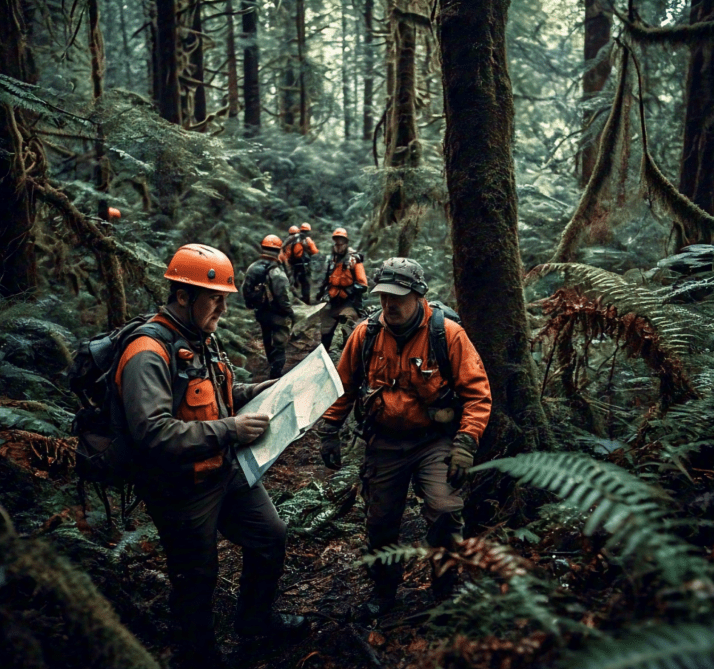
4. Teamwork: The Strength of the Unit Matters More Than the Individual
SAR is not a solo operation. Communication, trust, and coordination with your team are critical. Whether you're leading a search, assisting medics, or managing logistics, everyone plays a role.
5. Reality vs. TV: The Truth About SAR Work
- TV Version: High-speed rescues, helicopters, and dramatic saves.
- Reality: Long hours in tough conditions, methodical searches, and more “hurry up and wait” than adrenaline rushes.
SAR is about endurance, patience, and precision. Many missions involve grid searches, clue detection, and supporting law enforcement. The reward isn’t excitement—it’s bringing someone home.
6. Read the Book - Gain a Massive Head Start
After 20+ years in SAR, I share some of the most hard-earned lessons that I wish I knew when I started. "So That Others May Serve" is now available in Kindle and Paperback. Learn more here or click the image below:
Final Thought: SAR is a Commitment, Not a Hobby
If you’re willing to train hard, show up when needed, and put the mission first, SAR can be one of the most fulfilling ways to serve. The work is demanding, but the impact is life-changing. Are you ready to answer the call?
Using Animals in SAR
Many people explore SAR because they have a dog with potential. However, suitability for SAR work is rare and requires rigorous training, certification, and reliability.
SAR K9 Readiness
K9 candidates should be at least 10-12 months old before officially screening them for search work. Besides having the opportunity to mature, by then, they should have also had their hips and eyes evaluated for genetic issues by a qualified veterinarian.
Prospective search dogs should be evaluated by an experienced working-dog evaluator who will look for strengths and weaknesses in the dog's genetic nerve strength, drives, etc. Evaluating a dog is an exhaustive but extremely critical process. Forms and guidelines are included for those enrolled in our SAR K9 Intro course.

Even if they pass an initial screening, the time it takes for a dog to be deemed 'mission ready' can range from 6 months to 2 years. Those extraordinary dogs that become 'mission ready' meet three essential standards:
- They're TRAINED - backed by comprehensive training records
- They're CERTIFIED - by a reputable, outside evaluator
- They're RELIABLE - they perform consistently regardless of conditions
Early Preparation Tips
- Play hide-and-seek or fetch with your dog.
- Introduce them to diverse environments (empty bathtub, under a parked car, loud environments, etc.).
- Teach basic obedience.
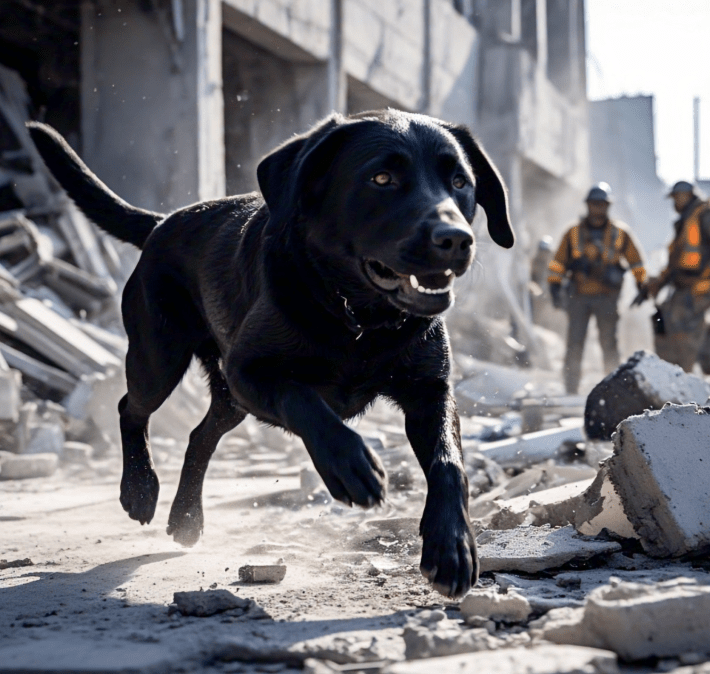
SAR K9 Summary
- Training: Dogs must be comprehensively trained and certified by reputable evaluators.
- Proficiency: Handlers must be skilled searchers first.
Becoming a Certified SAR Instructor
Competent SAR instructors must meet five criteria:
- Subject Matter Knowledge
- Classroom and Student Management
- Instructional Ability
- Humility
- Use of Professional Curriculum
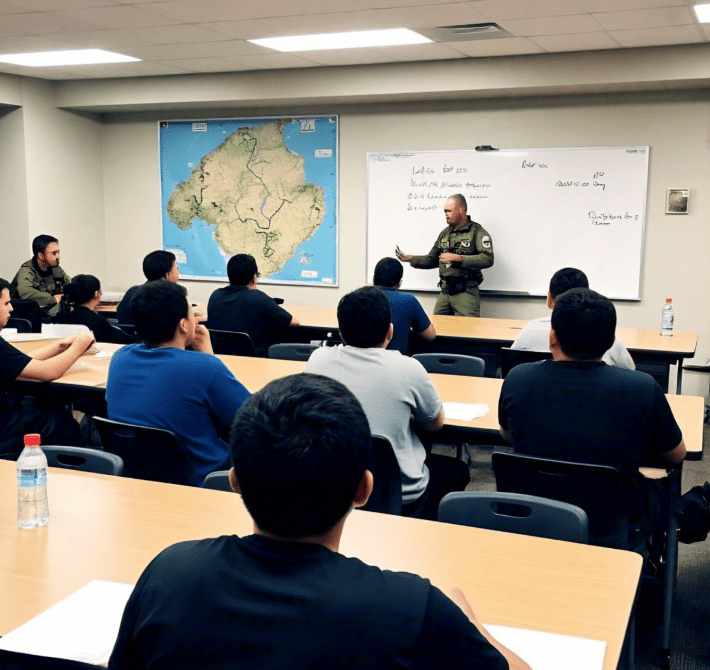
Certification requirements vary by course. For example:
- NASAR Certifications: Focus on field skills but lack stringent instructional standards.
- FEMA Certifications: Require extensive training, documentation, and evaluation.
The process is demanding. So much so that at last check, I am the only person on the planet to ever be simultaneously certified to teach FEMA’s three primary search courses: Technical Search Specialist, Canine Search Specialist, and Wide Area Search. A reflection of the high bar required for federal-level instruction.
Becoming a certified Search and Rescue (SAR) instructor is a rewarding path that allows you to train and mentor future SAR responders. Whether through CERT (Community Emergency Response Team), FEMA (Federal Emergency Management Agency), NASAR (National Association for Search and Rescue), or other SAR certification programs, the process generally involves education, field experience, and instructor training. Here’s a step-by-step guide to achieving certification:
Step 1: Gain SAR Experience
Before becoming an instructor, you need firsthand SAR experience.
- Join a SAR team – Volunteer with a local SAR unit, CERT team, or emergency response organization.
- Complete SAR missions – Actively participate in field operations, including wilderness search, disaster response, or urban rescue.
- Develop technical skills – Gain expertise in land navigation, search strategies, rescue techniques, medical response, and incident command procedures.
Step 2: Obtain SAR Certifications
Most SAR instructor programs require foundational certifications. Common certifications include:
- NASAR SARTECH I or II – Nationally recognized SAR responder certifications.
- FEMA ICS Courses – Complete ICS-100, ICS-200, ICS-700, and ICS-800 (Incident Command System training).
- Wilderness First Responder (WFR) or EMT – Medical training is often required.
- CERT Basic & Train-the-Trainer – If teaching within the CERT framework.
Check the requirements of your target instructor program to ensure you meet prerequisites.
Step 3: Develop Teaching and Leadership Skills
SAR instructors must be effective educators and mentors.
- Take instructor development courses – Many agencies offer "train-the-trainer" programs.
- Gain public speaking experience – Teaching requires clear communication.
- Assist in SAR training – Volunteer as an assistant instructor in training exercises.
Step 4: Enroll in an Instructor Certification Program
Different organizations offer instructor certifications, each with specific requirements:
NASAR SAR Instructor
- Meet SARTECH II or SARTECH I requirements.
- Attend NASAR’s Managing the Lost Person Incident (MLPI) course.
- Complete NASAR Instructor Development Program (IDP).
- Pass a knowledge and practical skills test.
FEMA CERT Instructor
- Complete CERT Basic Training.
- Take CERT Train-the-Trainer (TTT) – A specialized FEMA course.
- Get sponsored by a local emergency management agency.
State-Specific or Agency-Specific SAR Instructor Programs
- Some states and agencies offer their own SAR instructor certification.
- Requirements may include additional training, experience, and state-level exams.
Step 5: Pass Instructor Evaluations
Most instructor programs require:
- A written exam on SAR principles and instructional techniques.
- A practical teaching demonstration, where you lead a SAR lesson.
- A peer review process to assess your ability to train responders.
Step 6: Maintain Certification and Continue Training
Once certified, you must maintain your credentials by:
- Attending continuing education courses.
- Conducting a minimum number of training sessions per year.
- Staying active in SAR operations.
- Renewing medical and ICS certifications as required.
Conclusion - How to Become a Certified Instructor
Becoming a SAR instructor is a challenging but fulfilling journey. It requires hands-on SAR experience, specialized training, and strong instructional skills. By following the steps above and meeting the certification requirements of organizations like FEMA, NASAR, or CERT, you can become a certified SAR instructor and help train the next generation of responders.
Paid Roles in SAR
While SAR is predominantly volunteer-based, paid opportunities exist with:
- Government Agencies: Coast Guard, Forest Service, National Park Service.
- Law Enforcement: Sheriff’s Departments, Border Patrol.
- Fire service: Swiftwater, flood and disaster rescue. Paid and volunteer.
- Military: Pararescue or rescue swimmer roles.
However, even in these paid positions, search and rescue might not be your primary function. It might be a duty you perform alongside other responsibilities.
Another option to consider is getting an Emergency Medical Technician (EMT) certification. While not directly search and rescue, EMTs can be called upon to assist search and rescue teams in providing medical care to those found.
My route started with local volunteer SAR prior to joining a state team who also has a federal mission.
State and federal missions were paid jobs but the vast majority of the training - which was a massive amount of time and effort - was not.
International SAR
The International Search and Rescue Advisory Group (INSARAG) sets global standards for international SAR efforts, emphasizing coordination and minimum competency benchmarks.
Gear Considerations for Search and Rescue: The Essentials You Can’t Overlook
When it comes to Search and Rescue (SAR), your gear can mean the difference between success and struggle—or even life and death. The right equipment doesn’t just make the job easier; it enhances safety, efficiency, and endurance in the field. While gear choices vary based on terrain, climate, and mission type, there are three non-negotiables every SAR responder should invest in: good boots, quality weather gear, and a reliable flashlight.
Learn from Those Who Know the Terrain
One of the best ways to refine your gear selection is to consult experienced responders who regularly operate in your area. What works in the desert won’t hold up in the mountains, and cold-weather SAR presents different challenges than flood response. Seasoned team members can provide hard-earned wisdom on what actually holds up in real-world conditions—insight that’s often more valuable than manufacturer claims.
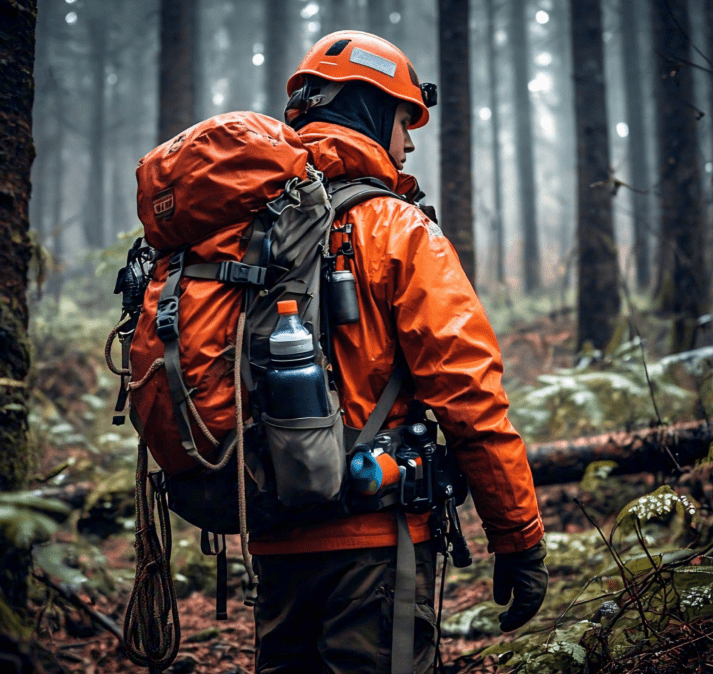
1. Boots: Your Foundation in the Field
Your feet are your primary mode of transportation in SAR, and subpar boots can lead to blisters, fatigue, and even injury. A quality pair of SAR boots should provide:
- Ankle support – Reduces strain on uneven terrain.
- Water resistance – Keeps feet dry in wet conditions.
- Durability – Withstands miles of wear and tear.
- Comfort – Because hours in the field demand it.
Many responders swear by brands like Lowa, Salomon, or Danner, but the key is finding boots that fit your foot type and support long hours of movement under load.
2. Weather Gear: Protecting Against the Elements
Mother Nature is indifferent to your mission. Whether it's scorching heat, freezing cold, or relentless rain, being unprepared for weather conditions can quickly turn you from rescuer to someone who needs rescuing.
Layering is essential:
- Base layer – Moisture-wicking to keep sweat off your skin.
- Insulating layer – Retains body heat in cold conditions.
- Outer shell – Waterproof and wind-resistant to shield against the elements.
Avoid cheap gear—a $40 rain jacket won’t cut it when you're hours into a mission in pouring rain. Look for Gore-Tex or eVent fabric for breathable waterproofing that won’t trap sweat.
3. A Quality Flashlight: Seeing (and Being Seen) Matters
Low visibility is a given in SAR—night ops, heavy fog, and dense forests can all challenge your ability to navigate and locate subjects. A dependable flashlight or headlamp should offer:
- At least 300 lumens for visibility.
- A red-light mode to preserve night vision.
- Long battery life and rechargeable options.
- Waterproof and impact-resistant construction.
Many SAR professionals carry both a primary flashlight (SureFire, Streamlight, or Fenix) and a backup headlamp (Petzl or Black Diamond) for hands-free operation.
Final Thought: Cheap Gear is Expensive in the Long Run
Investing in quality gear upfront saves money—and possibly your life—over time. Whether it’s boots that don’t give out, weather gear that keeps you functional, or a flashlight that won’t fail when you need it most, your equipment is part of your readiness and reliability as a SAR responder. Take the advice of those with experience, field-test your gear, and always prioritize function over fashion. When the call comes, you’ll be glad you did.
Downloads, Tools, and Job Aids
Free Pocket Cards
Showing all 8 resultsSorted by popularity
-

AAR Readiness Checklist
$0.00 Add to cart -

Mission Planning Worksheet
$0.00 Add to cart -

Mass Casualty Disaster Planning Medical Scenarios
$0.00 Add to cart -

Instructor Activity Tracking Workbook
$0.00 Add to cart -

Resident Accountability Form and Instructions
$0.00 Add to cart -

Preliminary Damage Assessment Pocket Card v1.1
$0.00 Download Free -

Search & Rescue Pocket Card v1.1
$0.00 Add to cart -

Incident Action Plan (IAP) ICS Forms Workbook
$0.00 Add to cart
Additional Resources
Articles and Insights
Contact Information
Have questions or need guidance? Reach out or subscribe to our newsletter for tips and updates.

